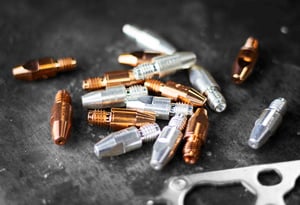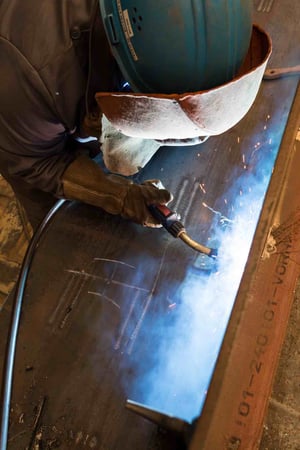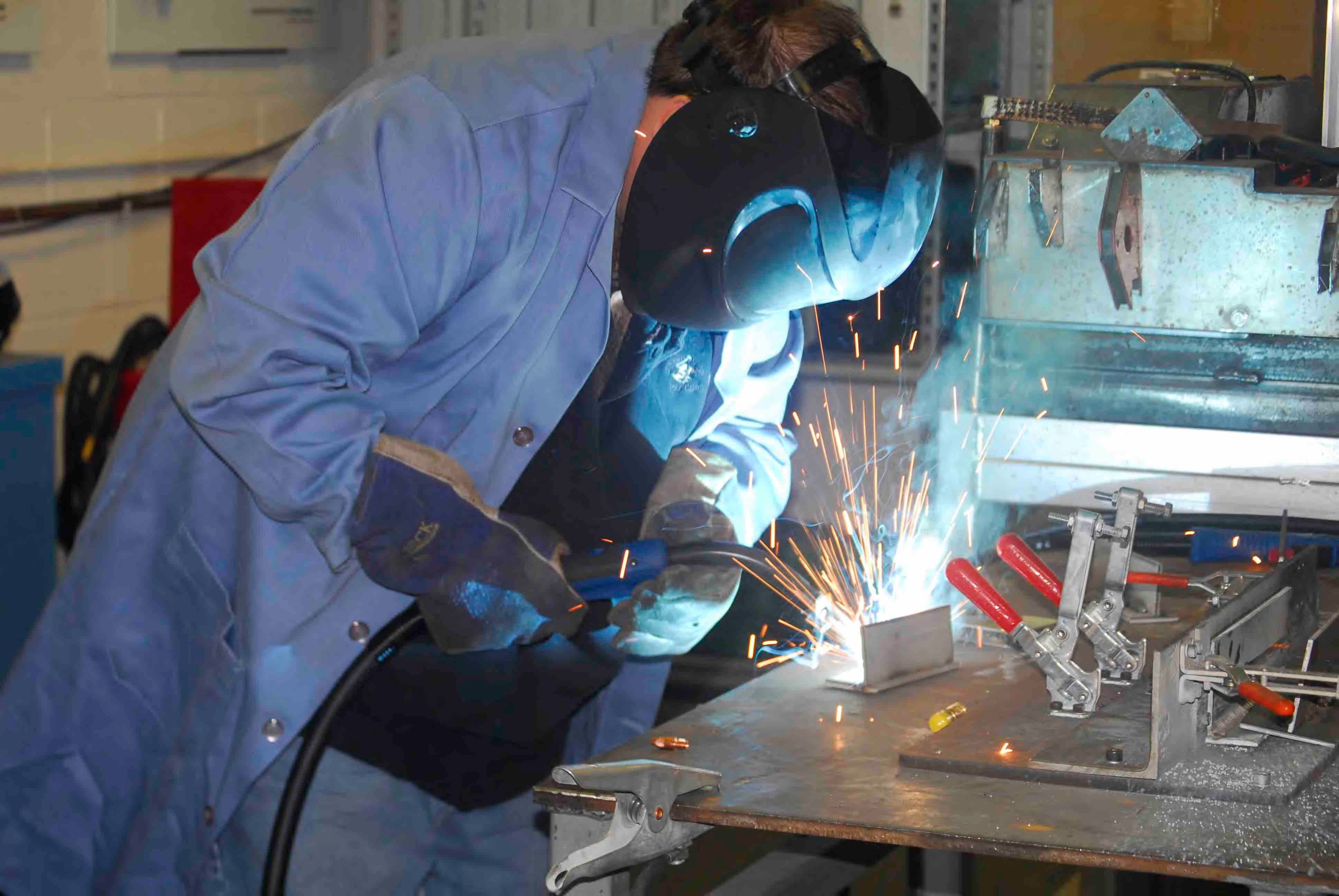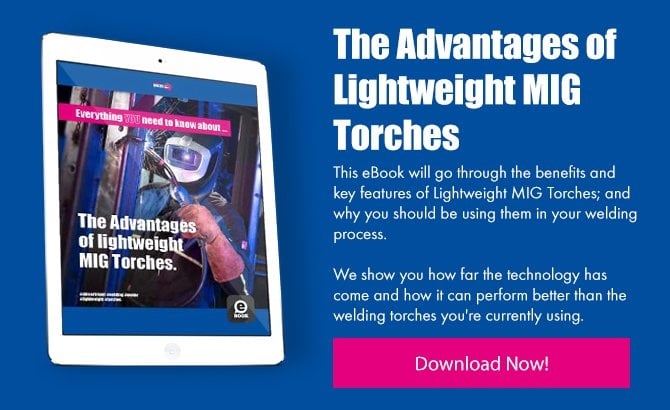Welding guns and MIG welding in general come with a lot of talk regarding best practices and how to do certain things right.
But often the things that hold shops back from increasing productivity or making a demanding job less so is holding on to misconceptions about the way things are when it comes to welding equipment.
We get it, it’s hard to keep up to date, or try these out for yourself. And sometimes it’s too time-consuming to do. But what about just making the small changes? Questioning the simple ideas and conceptions you have long held could be holding the key to unlocking reaching productivity goals, cutting your cost, and saving you and your welding staff time.
We looked at some of the misconceptions encountered all the time at shops, or from comments from weld professionals and hobbyists, and found the most common that are said all the time that could be holding you back.
“Imitation Contact Tips are Just as Good and Save me Money”
There are countless manufacturers out there using imitation or “Binzel-style” or some other style of contact tip, sometimes without even knowing. When you’re using an OEM MIG gun, be it manual or robotic, high-quality contact tips are going to be the best tips you can get for that welding gun in almost every possible case. There are a lot of “style” tips that you can use from lower cost makers. And they are made much differently than the patented manufacturing processes OEM MIG gun makers use. They’ll be an inferior tip almost every time.

Very small and difficult to tell details like the diameter of the orifice won’t be as consistent, or as smooth, and that contact tip won’t last as long as a result. Tolerances won’t be as tight as well. You’re also going use a different material grade, too, with less quality copper or alloyed copper. With contact tips the premise is simple: the better the material grade the more durable and lasting the contact tip will be. Companies with a patented process will produce a higher quality contact tip over imitation or retrofit contact tip maker. The only way to see a difference is do a side by side up close, or if you really want to know, test them next to each other.
It costs a lot to have your robot down to change a contact tip because it failed prematurely; far more than the cost savings of an imitation contact tip. The 10 minutes your robot cell may be down will cost far more to your operating cost than the 20 cents you may save going with an imitation contact tip over an OEM. Robot cell downtime can cost up to $10,000 per 10 minutes in high volume operations.
Another misconception when it comes to imitation contact tips is cost vs. price, and this speaks directly to opting for lower cost options because the upfront capital is less. While that imitation contact tip may run $1 per tip as opposed to $3 contact tip from an OEM, once you’re out on the floor with these tips the performance of lower-priced consumables will almost always eat into the productivity of your welders and your robot work stations.
Ask yourself this question: What does it cost to change out a contact tip? When you consider how much time it takes to shut down the weld cell or station, get to the tool crib, get the consumable, replace it, and perform safety procedures like lock out tag out, you’re looking at anywhere from 10 to 20 minutes just to change out a part and keep production going. Combine the time it takes with the possibility of needing to grind your weld down to get a good arc restart, it can become a time-consuming ordeal to do a very simple contact tip change.
The actual cost of that $1 contact tip just went up from $1 to potentially hundreds of dollars because of having to shut down your cell or your station prematurely to do routine maintenance. While there are certainly areas where it benefits to be more price conscious – a part as potentially cost-consuming as your contact tip is a place to look very closely at how much return you get for your cost.
“Maintenance on MIG Guns Isn’t Important”
Torch maintenance, whether it be handheld or robotic MIG guns, is another area where having a proactive approach to the condition of your welding guns pays huge dividends over the long haul. Doing simple preventative maintenance doesn’t mean you have to take the welding gun off the machine every time. Even performing basic inspection can go a long way to ensuring less overall maintenance is needed and the tool is lasting as long as it possibly can. Doing simple things like:
- Changing out parts when they need changing out
- Keeping things clean
- Inspecting at the start of a shift
- Make sure your contact tip is seated properly
- Check your wire liner to be sure it’s cut right
- Check the cable for any abrasion and proactively addressing it
- Make sure you have the right parts on and tightened

This keeps more problematic issues from occurring when they are easily avoidable. There is a thought among some that maintenance isn’t really something that needs to be worried about; simply replace the welding gun when it fails. But it’s not only wasted cost to simply replace a failed MIG gun, it’s also the cost of downtime when the welding gun fails.
It’s not just the cost of the part that contributes to the bottom line; the less time product is being joined on the floor the more replacing a failed MIG gun costs because it wasn’t routinely maintained.
“Brass Nozzles Perform Better than Copper or Nickel-plated Nozzles”
While brass nozzles are the standard for most short arc applications, there is a prevailing misconception that brass is a superior nozzle material to copper across every welding application.
Brass is a pretty brittle material in truth, and while it does do nicely in not having much spatter stick to it, brass nozzles do break and fail frequently and easily in medium to high-amperage applications. Brass can crack, chip, and break under high stress, especially when it gets hammered on, and that invites places for spatter to adhere to while welding.
Copper – which is the base metal used in nickel-plated nozzles – is a more malleable material. If you drop it, for instance, it’s more likely to dent as opposed to crack like with brass. Welding isn’t a delicate process, so you need parts that will hold up to some abuse.
Also, copper is a superior material at dealing with heat as the amperage rating rises. This is because nickel actually deflects heat as opposed to absorbing it, which keeps your nozzle at a lower temperature while you’re welding. This means if you do, for instance, weld at higher parameters, you are certain to get more life and better durability from nickel-plated copper nozzles over brass nozzles.
“Lightweight MIG Guns are not Durable”
 This misconception gets gets passed around a lot because the feeling is that lightweight somehow means less material or cheaply made. This is an extremely inaccurate misconception. Lightweight MIG guns from BINZEL aren’t weak, and in many cases are made better than their heavier, comparable counterparts. Patented designs of things like welding cables contribute dramatically to lessening the weight of the welding gun without sacrificing performance or durability. In turn, you get the same rating capacity and better performance with less weight.
This misconception gets gets passed around a lot because the feeling is that lightweight somehow means less material or cheaply made. This is an extremely inaccurate misconception. Lightweight MIG guns from BINZEL aren’t weak, and in many cases are made better than their heavier, comparable counterparts. Patented designs of things like welding cables contribute dramatically to lessening the weight of the welding gun without sacrificing performance or durability. In turn, you get the same rating capacity and better performance with less weight.
What makes the cable lightweight isn’t less material, but using lighter material within the cable itself that allows the same amount of current to pass through a welding gun while being significantly lighter. Most MIG guns – especially the heavier ones many use every day, are strictly using copper to pass electrical current through the cable. Using lighter metals combined with copper to reduce the weight while maintaining that rating gets you the same durability and performance while keeping the weight down and the comfort of the welder up.
Other components of lightweight MIG guns that can contribute to their longevity are features like the handle. A lot of handles are made from very hard materials that can tend to crack or break more easily when a high amount of force is applied to them: think hammering on them or dropping them from a high point. Handles designed to have more absorption, while maybe feeling weaker, tend to hold up better than extremely hard handles because they do better at absorbing force and contact that harder materials don’t.
Handles that have reinforcement in the moldings are the kind of small design feature that go a long way towards ensuring your welding gun handle holds up to an industrial environment. These are things you can see when you open up the handle.
“I Weld Hot, So I Need the Highest Amperage MIG Gun Possible”
Some Welders think they need a higher amperage rating gun than they actually need. Lot of times people think they need a 400 amp gun (which sometimes they do) for every application, but you don’t need a 400 amp gun for a power source that maxes out at 300 amp. If you’re welding in an automated situation where you have really long welds and you tax the duty cycle of a lower amp gun, you can level up to a higher amperage gun to offset how hard the welding gun is run.

Generally, you should try to pair up your welding gun to the rating of your welding machine or what weldments you’re doing. Sometimes you may have a 500-amp rated power source but doing a joining application that calls for 200 amp. This could be based on a lot of factors, but the main ones are things like material thickness, wire size, and your welding procedure specification.
This is all about getting the right tool for the job. You don’t need a big, heavy amp MIG gun for every welding situation.
Overcompensating for amperage adds weight, increases fatigue, is more expensive to replace and maintain, and your consumables cost more because your higher amperage MIG gun demands larger consumables to deal with the ratings that higher amperage MIG guns are typically made for.
This means more machining, more material and more cost to you.
Bigger isn’t always better.
So What Does This Mean?
The important thing to take away is that often it is the smallest and simplest changes that can make the biggest difference. Changing to a higher quality contact tip does nothing to your welding procedure specifications, nor does implementing a solid routine maintenance check. And what’s better, nobody has to change their routine much to accommodate it.
Other misconceptions like going to a properly rated gun may mean mismatched consumables for a time, but work with your OEM and come up for a conversion strategy that meets yours and their needs.
As for looking at lightweight MIG guns, demoing these on the floor and putting them to work is a pretty low-risk opportunity to cut your operating costs and improve your welder’s comfort.
Any welding OEM – especially we at ABICOR BINZEL – look at demos as ways to prove our value to people like yourself. Whenever you’re ready to compare, you can find improvement you may never thought possible.


